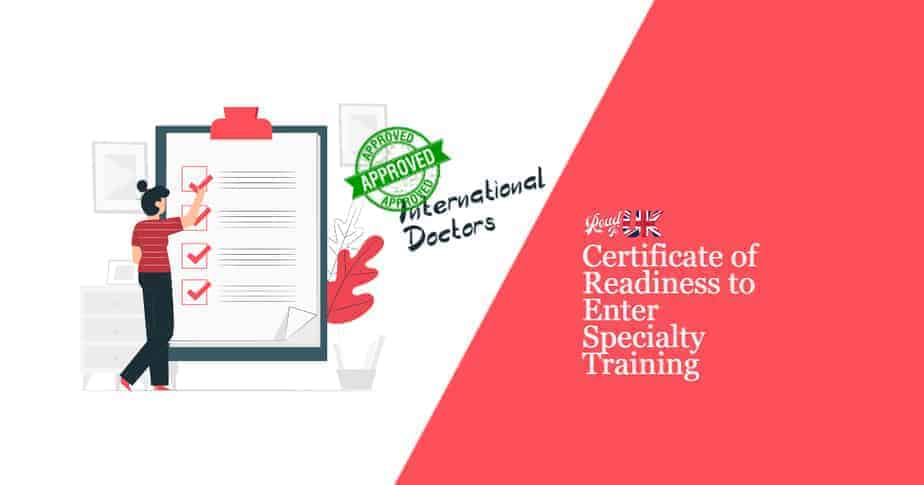The CREST Form : All you need to know as an IMG

You may have heard of the certificate of readiness to enter speciality training (CREST), which is required to enter CT1/ST1 training in all specialities. It is also known as the alternative certificate of foundation competences. Getting it signed it an important part of progression into training.
Please note, CREST form is ONLY required if you have not completed UKFPO foundation program or an FY2 standalone post. In those cases, you will be awarded an FPCC (foundation program completion certificate) which is the proof of your foundation competencies.
What are the ‘Foundation Competencies’?
Competency
1. the ability to do something successfully or efficiently.
“This course will improve the competence of doctors”
From the beginning of pre-school to our final exam in medical school, more often than not, our ability to successfully complete a stage had been dependent on exams and assessments. For example, a student of a medical school has a curriculum (set by the authority who runs medical education in that country) and following that, a syllabus is made by the teachers involved who imparts the necessary education for that student to pass the relevant exams.
In plain words, ‘foundation competencies’ is a curriculum developed for foundation doctors in the UK (interns/house officers) to achieve during and by the end of their training. So, how can these competencies be assessed if a doctor has not undertaken an official UK foundation training? This is where the CREST form comes into play.
Check official UKFPO website for the foundation program curriculum.
Who needs CREST form?
Let’s run you through a few questions:
- Are you going to join UKFPO Foundation training for 2 years OR join a one year FY2 Standalone post?
- If yes, then you do not need to think about CREST form at all. You will be awarded FPCC at the end of that training.
- Are you going to start in the NHS in a non-training post (trust grade/clinical fellow)?
- If yes, then for that post, you don’t need a CREST form signed.
- Are you planning to apply for any CT1/ST1 level training post and do not have an FPCC (foundation program completion certificate)?
- If yes, then you NEED to have a CREST form signed (preferably before the training application period).
So, the third point, applying for a training post, can come-
- after working in the UK for some time or
- even directly from outside the UK if you are otherwise eligible.
What are the requirements to get a CREST form signed?
The CREST form is nothing but a list of competencies. So, obviously you have to have evidences or convince your signatory that you have those competencies. That is the first thing – your signing consultant knowing that you are capable of doing all those things mentioned in the form.
Who can sign my CREST form?
The individual signing your CREST form (or the signatory) needs to be registered with any medical regulatory board. If it is not with GMC, they must submit current evidence of their registration with that board. If it is not in English, a certified translated copy must accompany it.
This signatory must be a consultant who has worked with you for AT LEAST 3 continuous months in that last 3.5 years. They must also currently be on a specialist register. If you’ve worked in the UK in the last 3.5 years for 3 or more months in an acute post, you should ideally have the CREST form completed by a UK consultant rather than an overseas consultant.
Please also note that contact details from the individual signing your CREST will be required. This should be an institutional email address and not a personal one (ex: Gmail, Yahoo). The hospital stamp which is used to certify the signatory should also include the details of the hospital, and not just their name and job title.
How can I achieve these CREST form competencies?
Now, if your desired training is at CT1/ST1 level, and you have not completed UKFPO foundation program (which is the case for many IMGs) – you will have to get this CREST form signed. How can you do that?
Check and see what is required of you from the CREST form against your work responsibilities and role, and speak to any supervisor you feel would be able to sign you off. This is the first and most important step.
Let’s look at the CREST form
If you look at the CREST form here, each competency in the four sections have three columns:
- Personally Witnessed
- Evidence Received
- Unable to Confirm
Be very clear with your consultant who will be signing it that, if they are unable to confirm any competency, they must tell you before ticking it as that makes the whole form ineligible to submit for your training application. You may have some evidence or reference they can take into account and mention that in the form if they have not personally witnessed any of your competencies.
Unable to confirm is any of the competencies in the whole CREST form makes the entire form ineligible.
How long does it take to get the CREST form signed?
Officially, the minimum you have to work is for 3 months. But, truth be told, it may not be possible to convince your consultant of your capability to that extent within just three months of working. So, let’s be realistic and set a practical time frame.
If you adhere to updating your e-portfolio regularly and work in a fairly independent speciality like acute medicine or emergency medicine or have medical on-call shifts, it shouldn’t take you more than 3-6 months to a gain the competencies as outlined by the CREST form. Also take into account that you will have to complete e-learning modules, attend teachings and training courses (like ALS), and participate in audits and QIPs.
Please remember, this is all highly dependent on your communication with your supervising consultant. If they do not know that you are aiming for CREST form, they will not just observe you closely for fun. It is YOUR responsibility to make them aware what you want to achieve and plan your progression with them.
Frequently Asked Questions
How long CREST is valid?
The form itself doesn’t have validity unless there is a new version available. The work period for which the CREST is getting signed has to be within 3.5 years from the start date of the training you are applying for. For example, if you are applying to join training which will start in August 2025, you can not get the CREST form signed referencing any work that you did before March 2022.
Can I get it signed by non-UK consultants?
Yes. If the consultant is happy that you have met all the competencies mentioned in the form (either personally witnessed or evidence received), then yes they can sign the form. Remember that you will have to add their registration document along with proof of their being a consultant/specialist in that country (translated in English if not) along with it.
That is all our guidance about the certificate of readiness to enter speciality training (CREST) form. If you have any questions, ask in the comments below! Good luck!

